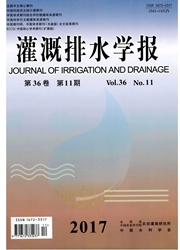

 中文摘要:
中文摘要:
运用大气环流模式(HadCM3)和统计降尺度模型(SDSM)模拟了漳河地区不同排放情景下(A2、B2)的未来气候变化规律,结合ORYZA2000模型分析了不同气候情景模式下水稻生长的差异,从水稻生产的角度探讨了不同水肥耦合调控方式对各种情景的适用性。结果表明,SDSM对温度、降雨、日照都有较好的模拟效果。在A2情景下,水稻产量减少,灌溉定额和氮肥吸收率增加;在B2情景下,水稻产量较高,水分和氮肥利用率较高,水稻生长状态较好;增加CO2质量分数可以提高产量,同时减少了不同水肥管理模式下产量的差异。间歇灌溉和3次追肥的水肥耦合调控方式对各种气候情景的适用性最好。
 英文摘要:
英文摘要:
Based on the General Circulation Model(HadCM3) and Statistic Downscaling Model(SDSM),the future climate was simulated in ZIS in scenario A2 and B2.Based on the ORYZA2000,the rice growth was simulated in those climate scenarios.In terms of rice production and environment pollution,the feasibility of different kinds of water and nitrogen managements was discussed in those climate scenarios.It showed that the results of SDSM were quite close to the observation on temperature,precipitation,and sunshine duration.In scenario A2,gains yield decreased and irrigation and nitrogen fertilizer use ratio increased.In scenario B2,rice product on great benefit,both grains yield and use ratio of water and nitrogen increased.Increasing CO2 concentration would help increasing grain yield and dry weight of rice,and the yield of different managements was getting close.The most applicable management for both the scenarios was AWD combined with 4 times nitrogen application.
 同期刊论文项目
同期刊论文项目
 同项目期刊论文
同项目期刊论文
 期刊信息
期刊信息
